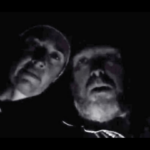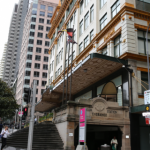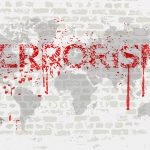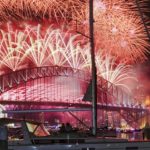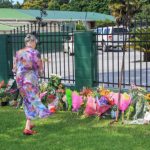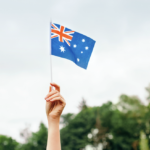Failure to Label the Wieambilla Far Right Killings as Terrorism is Unacceptable
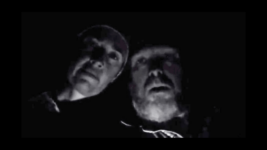
The decision of Queensland police not to classify the Wieambilla killings as terrorist in nature strays from the evidence already available to the public, although it does follow the habit of Australian authorities not to classify anything but nonwhite Islamic-related acts of violence as terror.
Queensland deputy police commissioner Tracy Linford told the press on 22 December that the shooting murders perpetrated on the 12th of this month are not being classed as a domestic terror event as “there’s nothing really to indicate that”.
Linford adds that while the sentiment displayed by the killers, “the three Train family members”, consists of “antigovernment, anti-police, conspiracy theorist-type things”, there’s nothing to show they were working or inspired by any particular group.
Yet, there was clear evidence available until shortly after the incident, which consisted of thirteen videos posted on a YouTube channel that established the Trains were heavily influenced by extreme far right ideology, including the sovereign citizen movement, as well as fundamentalist Christianity.
And in killing two Queensland police officers and a neighbour, the Trains had been motivated by multiple extremist beliefs loosely stringed together that have been circulating amongst a sector of our society since the onset of the COVID pandemic and have a strong base of adherents in the US.
“Run of the mill”
Four police officers arrived at Gareth and Stacey Trains remote Wieambilla property in the Queensland Western Downs region on 12 December, in relation to Nathaniel Train, Gareth’s brother and Stacey’s ex-husband, who’d recently been reported missing in NSW and was present on the day.
As it was left out of earlier official reports on the incident, Linford revealed on 22 December that the visit to the property that led to the death of six people, was also in relation to an outstanding warrant for Nathaniel over his having illegally crossed the border from NSW into Queensland.
When the border was only open to vaccinated people last December, Nathaniel, an unvaccinated former school principal, crossed the border into Queensland. And after an unsuccessful attempt to get across the flooded Macintyre River, he dumped his car, along with other items, including guns.
But despite this incident, which further involved a camouflage-clad Train moving into the northern state equipped with a bow and arrow, guns and knives, having been reported to the police soon after it occurred, Linford described the recent visit to the property as “run of the mill”.
Of the four officers attending the property, two were shot dead, a third fled after being shot, while the fourth officer hid in long grass, which led the Trains to then start a fire in an attempt to flush them out. And on seeing the smoke, a neighbour attended the property only to be killed as well.
Following the murders, 16 Queensland police officers were involved in a six hour standoff with the Trains, which ultimately saw the trio shot and killed.
Far right ideological inspiration
Crikey reported, on 16 December, that in the lead up to the massacre, Gareth and Stacey posted 12 videos on their own since-deleted YouTube channel, which showed an adherence to a number of far right conspiracy theories.
The pair also posted a thirteenth video recorded after they and Nathaniel had shot the three victims. In the footage, Gareth says that “they came to kill us, but we killed them”, and he then goes on to refer to the police who turned up at the property as “devils and demons”.
According to Crikey, the videos and comments made by the account foreshadowed the attack and suggested they’d been dealing with “covert agents and tactics” for some time, while, wrapped up in Biblical imagery, a clip posted on the day of the shootings stated they were preparing for battle.
The Trains videos further involved references to antivax conspiracy theories, those relating to human experimentation, as well as their having cited statements from ASIO head Mike Burgess about the rising threat of extremism within the Australian community.
A shift in rhetoric
Australian Security Intelligence Organisation (ASIO) director general Mike Burgess has been increasingly warning the community about the rise of “so-called right-wing extremism” over recent years.
In his 2020 Annual Threat Assessment, the top spy outlined that he’d expect a “right wing extremist inspired attack in Australia” to be “low capability” but he also saw there was potential for “more sophisticated attacks”.
Burgess went on to reveal in his assessment a year later that his agency’s “ideological extremism investigations” had grown from a third of all its “priority counterterrorism caseload” to then account for 40 percent of it.
“COVID has reinforced extremist beliefs and narratives about societal collapse and a race war,” Burgess said in March 2021. “As a consequence, we are seeing extremists seeking to acquire weapons for self-defence, as well as stockpiling ammunition and provisions.”
Two months later, the ASIO head the appeared at a budget estimates hearing, where he outlined that white supremacist groups were then making up 50 percent of his terror caseload, however he was no longer labelling these “racists and nationalists” as right wing.
And this year’s annual assessment saw Burgess continuing to refer to the threat of extremist ideology that has only been growing over the pandemic period, but he specifically noted that it doesn’t “fit on the left-right spectrum at all”.
White suburban terrorists
The most egregious terrorist act perpetrated by an Australian over recent years, was the 2019 Christchurch massacre, which saw a white Australian, spurred by far right ideology, shoot down 51 Muslim worshippers at two mosques in New Zealand.
Somewhat similar to the official determination of the Wieambilla shootings, the authorities and the media in this country were reluctant to label the mass shooting in NZ perpetrated by a white Australian as an act of terror.
And like the Trains, the Christchurch killer wasn’t directly associated with any specific group, but he was heavily influenced by a variety of far-right ideologies.
Early last week, Gun Control Australia called on the Queensland government to properly release information regarding the weapons used in the recent killings, so that the nation can have a truthful debate about how guns are being distributed within the community.
In a similar way, the decision of the QPS not to designate the recent incident terrorist in nature is also limiting public knowledge and the nation’s ability to properly address this white supremacist threat that’s only been increasing since the backlash to the pandemic restrictions occurred.
Indeed, this burgeoning far right in our midst is akin to the extreme right in the US that began mobilising with the 2016 election of Donald Trump to president, and the most significant act of violence perpetrated by it has been the January 2021 storming of that nation’s seat of government.
Indeed, Australia has a long history of failing to categorise terrorist acts committed by those on the extreme right wing as terrorism at all, while at the same time manufacturing claims that those of the Muslim faith have been plotting to commit terrorism offences.


